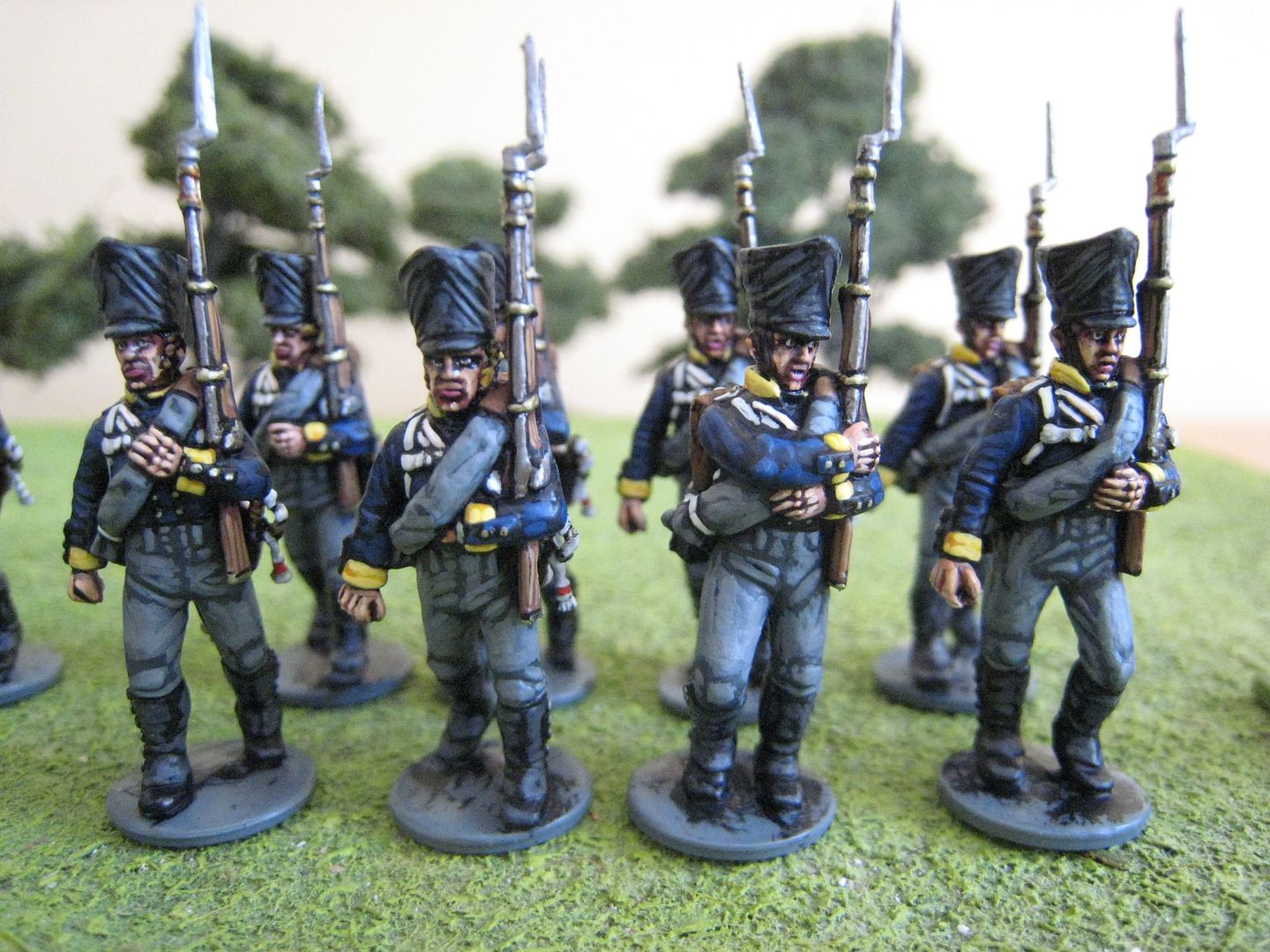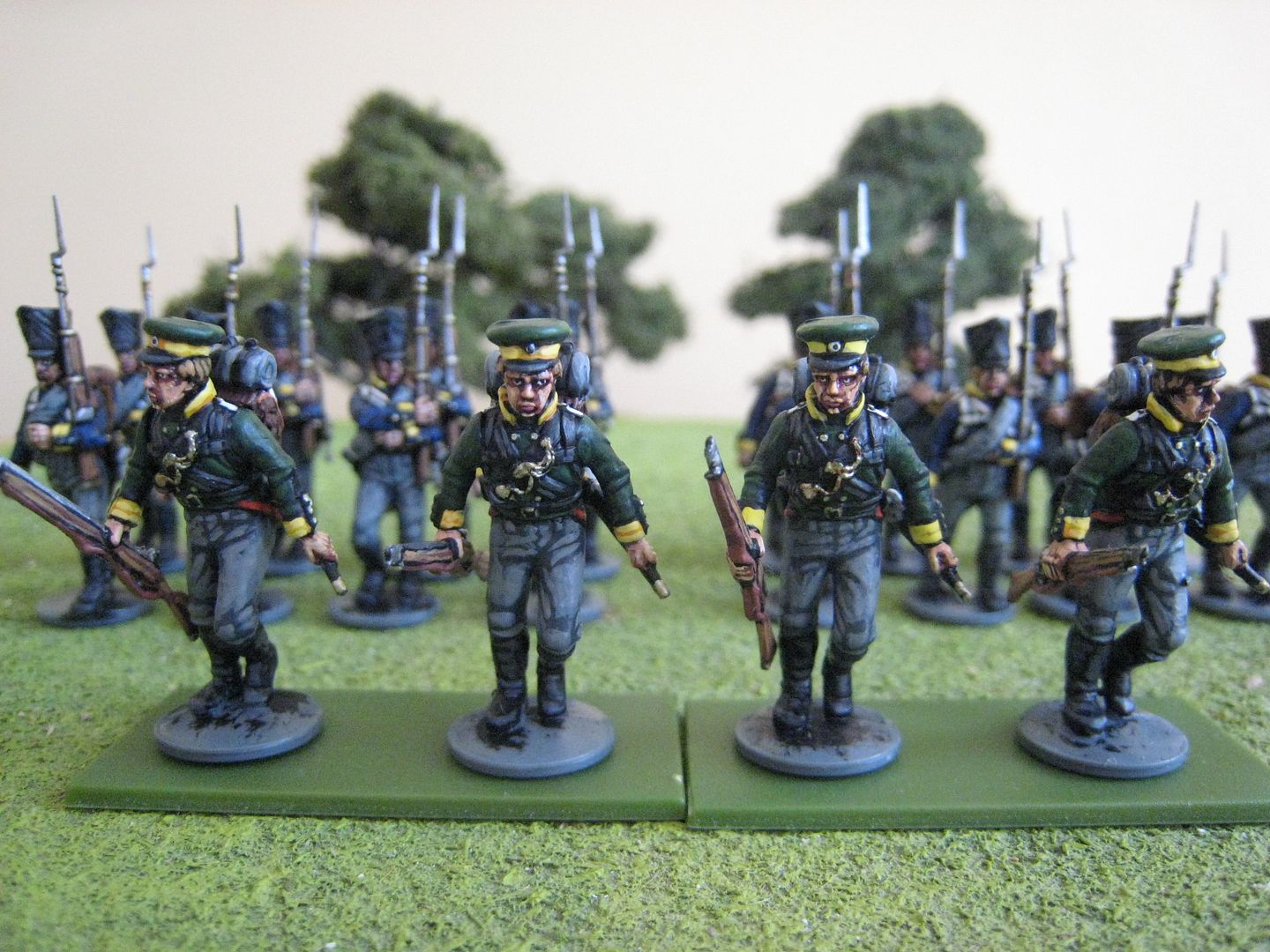
Apologies again - I've hit one of those occasional basing back-logs. I currently have 54 finished figures going through the basing process, including the completed first musketeer battalion of the Prussian 10th Infantry Regiment, more AWI French chasseurs and the Dutch 2nd Line Infantry for 1815. All these are rather large units and that has created a squeeze on basing and finishing the units off. I had intended to blog about the 6 volunteer jaeger figures that come in the Perry Prussian infantry box, but the pictures I took the other day are pretty rubbish (see left) so I need to take some more. I decided in the end to paint all the Prussian figures and so the battalion is 40-figures strong. As that means 10 figures for each company I have had to buy larger bases, which haven't arrived yet. The Dutch infantry battalion is something I have been meaning to do for ages. I painted 6 figures a few years ago and then moved on without painting any more. Whilst sorting stuff out in advance of my impending house move I found the rest of the unit and thought it was high time I finished it off. As it happens, I have now decided not to use the original 6 figures and so I am building the 24-figure unit from scratch; I'll explain why in due course. Hopefully the Dutch will be finished in a week or so and then the French chasseurs will be finished. After that I suspect there will be more Eureka AWI dragoons, as it's high time I returned to those.
Now I've finished the Perry Prussians box I don't intend to paint any more Prussians any time soon. I think my 1815 cravings will be met by concentration on Bachelu's division, the Middle Guard, the Dutch-Belgians and (as yet a mere twinkle) the KGL.















